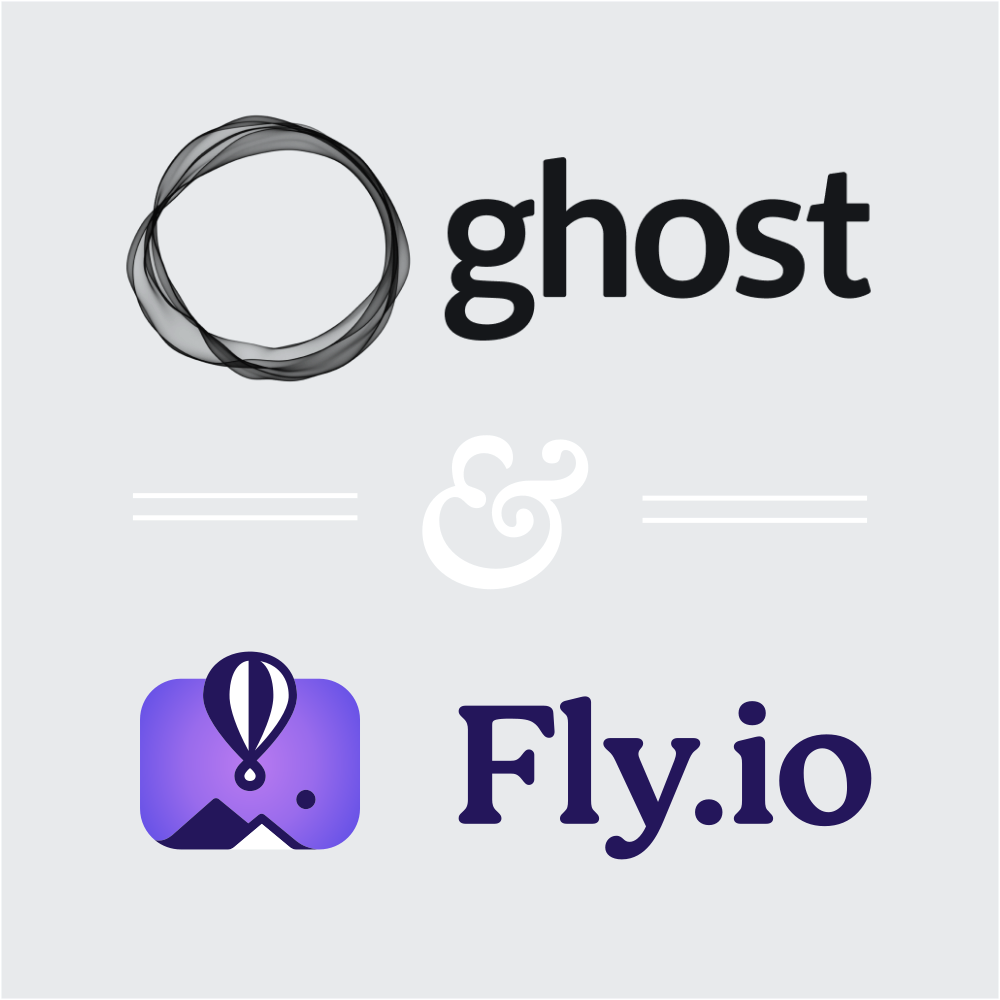Host a Ghost 5.0 Blog for Free on Fly.io — In 1 Minute

Ghost is one of the fastest-growing publishing platforms. However, for those looking to dip their toes in the water, one aspect can be off-putting: the shiny Ghost(Pro) hosting (referral link) starts at $11/month or $108/year — $300/year a year if you want to use your own theme — and even if you self-host on a VPS that will set you back around $5/month or $60 a year1
For years, I have hosted this blog on Heroku’s free tier. It was a bit involved to get set up, and the in-depth tutorial I wrote still gets traffic. However, when Ghost phased out PostgreSQL support, and Heroku changed their free tier, it became much more difficult.2
A little while ago, I ran across Fly.io on HackerNews3. It looked like it could run Ghost, and has a generous free tier. When it came time to find a better home for my Ghost blogs, I decided to give it a shot. There are several good tutorials out there, and the process only took about half an hour. I was happy. But what if the process took 30 seconds instead of 30 minutes?
Here is a single copy-and-pasteable command4 that will spin up a fully functional Ghost blog on Fly.io in less than two minutes5:
# Prompt for app name
read -p "Enter App Name: " appname </dev/tty && \
# Heredoc wrapper for tidyness (starting now, because we can't seem to prompt for input within heredoc)
bash << EOF
# Inspect script first if you are leery of pipe-to-bash
curl -L https://fly.io/install.sh | sh
# This will open a browser, where you can enter a username and password, and your credit card (which is required even for free tier, for fraud prevention).
flyctl auth signup
# Create a directory for the project and enter it, since the next command will output a file
mkdir ghost-flyio && cd ghost-flyio
# Create an app -- using Ghost Dockerfile, Seattle region, and app name prompted for earlier -- but don't deploy it
echo | flyctl launch --name $appname --image=ghost:5-alpine --region sea --no-deploy
# Provision a volume for Ghost's content and SQLite Database.
# Size can be up to 3GB and still fit in the free plan, but 1GB will be enough for starters.
flyctl volumes create ghost_data --region sea --size 1
# Install sed (stream editor), if it isn't already installed
sudo apt install sed
# Update the port to Ghost's default (2368)
sed -i 's/internal_port = 8080/internal_port = 2368/g' fly.toml
# Append info about where to find the persistent storage to fly.toml
cat >> fly.toml << BLOCK
[mounts]
source="ghost_data"
destination="/var/lib/ghost/content"
BLOCK
# Boom! We're airborne.
flyctl launch
# End our bash Heredoc
EOF
Note: if you are using Firefox (which does not honour pre-wrap, and inserts sneaky invisible trailing whitespace in the code snippet) please copy and paste the commands from here rather than directly from the above code snippet.















![Toni Kroos là ai? [ sự thật về tiểu sử đầy đủ Toni Kroos ]](https://evbn.org/wp-content/uploads/New-Project-6635-1671934592.jpg)


